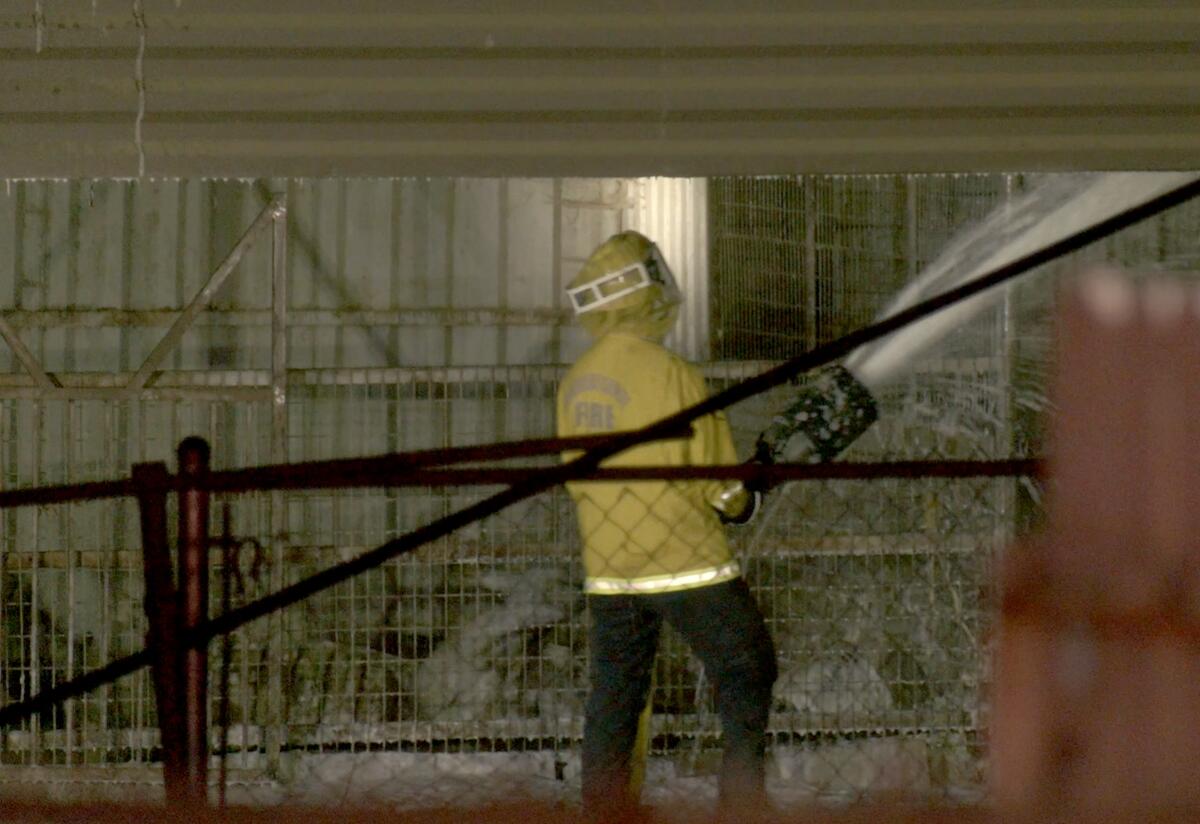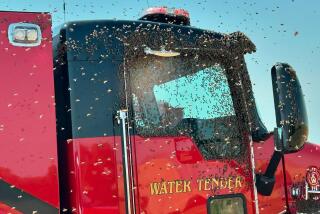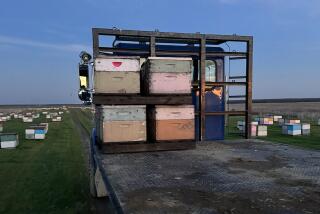Bees sting man 200 times, kill 2 horses in frightening attack in Jurupa Valley

- Share via
A man in Jurupa Valley survived an onslaught of aggressive bees despite being stung more than 200 times and experiencing a frightening allergic reaction.
Two of his horses, however, were not so lucky.
Riverside County firefighters arrived at the 9500 block of 52nd Street Friday afternoon to find Antonio Moreno and his 12-year-old son suffering from a profusion of bee stings, inflicted while they were feeding their four horses in the 9500 block of 52nd Street, ABC7 reported.
Moreno did not know he was allergic to bee venom until he was attacked, he told the local television station in Spanish. “Everything began to close up, my throat closed up, and my heart felt like it was going to explode,” Moreno said. “My chest hurt so much, everything hurt,” he told ABC7.
Two of the four horses died in the attack. Moreno said at least 200 stingers were removed from his neck and arms.
This time of year, bees can be more aggressive because the nectar in their hives can dry up. “Bees get hangry” just like humans, said Tyler Durboraw, a beekeeper and manager at Los Angeles County-based Bill’s Bees.
This summer, thousands of grasshoppers will take flight in northeast California, eating everything in their path and likely destroying crops along the way.
As for Moreno’s injuries, Durboraw said it only takes around 70 stings to kill a grown adult. “I can’t imagine [being stung] that many times,” he admitted. For beekeepers such as himself, he said, being stung on occasion can help build up a resistance. For someone who has never been stung before or is stung very infrequently, the allergic reaction to bee venom can vary.
The U.S. Department of Agriculture says allergic reactions from bee stings can range from minor swelling to being life-threatening, even from one sting. The department estimates that an average person without a severe allergy can withstand 10 stings per pound of body weight.
“Bees are still wild animals” but nothing to call an exterminator for, Durboraw said. “They can react poorly, like any other wild animal.” Actions such as bumping against the structure they are in, mowing or weed whacking around them can cause them to become more aggressive, he said.
Bees in Southern California, originally from Europe, started crossbreeding with Africanized bees in the 1990s, said Orange County beekeeper Mike Henderson. Over time, beekeepers have kept hives that are more docile and exterminated bees that show aggressive tendencies in an effort to keep the majority of wild bees calm.
“We — the humans — have put evolutionary pressure on bees to stay docile,” Henderson said.
If you find bees in a tree or open area on your property that might threaten you or your animals, you should call your local beekeeper association and see whether someone can move the bees to a new home, Durboraw said. If the bees are in a house or other closed structure, especially with a hive, he said, you should call a licensed beekeeper who can professionally remove them.
More to Read
Sign up for Essential California
The most important California stories and recommendations in your inbox every morning.
You may occasionally receive promotional content from the Los Angeles Times.












